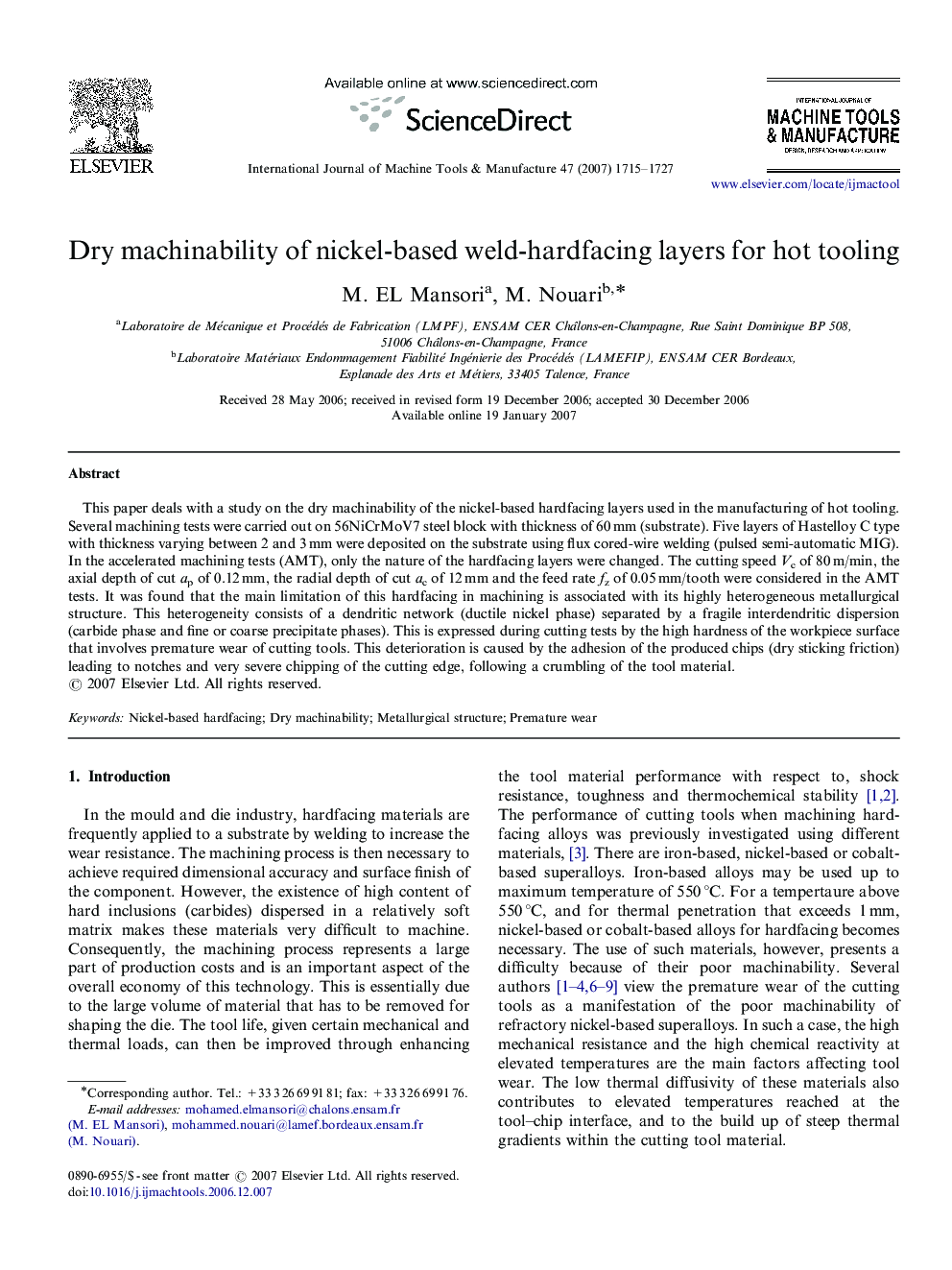| Article ID | Journal | Published Year | Pages | File Type |
|---|---|---|---|---|
| 782035 | International Journal of Machine Tools and Manufacture | 2007 | 13 Pages |
This paper deals with a study on the dry machinability of the nickel-based hardfacing layers used in the manufacturing of hot tooling. Several machining tests were carried out on 56NiCrMoV7 steel block with thickness of 60 mm (substrate). Five layers of Hastelloy C type with thickness varying between 2 and 3 mm were deposited on the substrate using flux cored-wire welding (pulsed semi-automatic MIG). In the accelerated machining tests (AMT), only the nature of the hardfacing layers were changed. The cutting speed Vc of 80 m/min, the axial depth of cut ap of 0.12 mm, the radial depth of cut ac of 12 mm and the feed rate fz of 0.05 mm/tooth were considered in the AMT tests. It was found that the main limitation of this hardfacing in machining is associated with its highly heterogeneous metallurgical structure. This heterogeneity consists of a dendritic network (ductile nickel phase) separated by a fragile interdendritic dispersion (carbide phase and fine or coarse precipitate phases). This is expressed during cutting tests by the high hardness of the workpiece surface that involves premature wear of cutting tools. This deterioration is caused by the adhesion of the produced chips (dry sticking friction) leading to notches and very severe chipping of the cutting edge, following a crumbling of the tool material.
